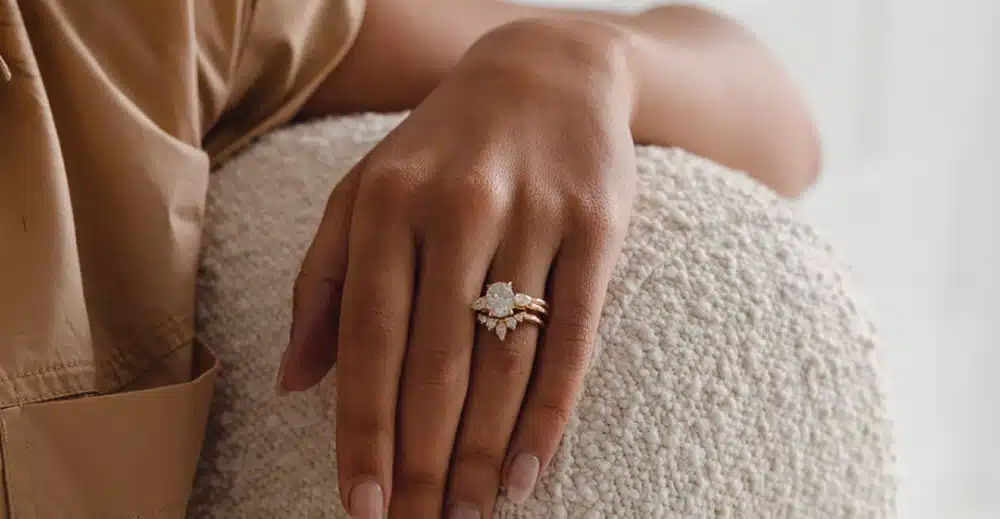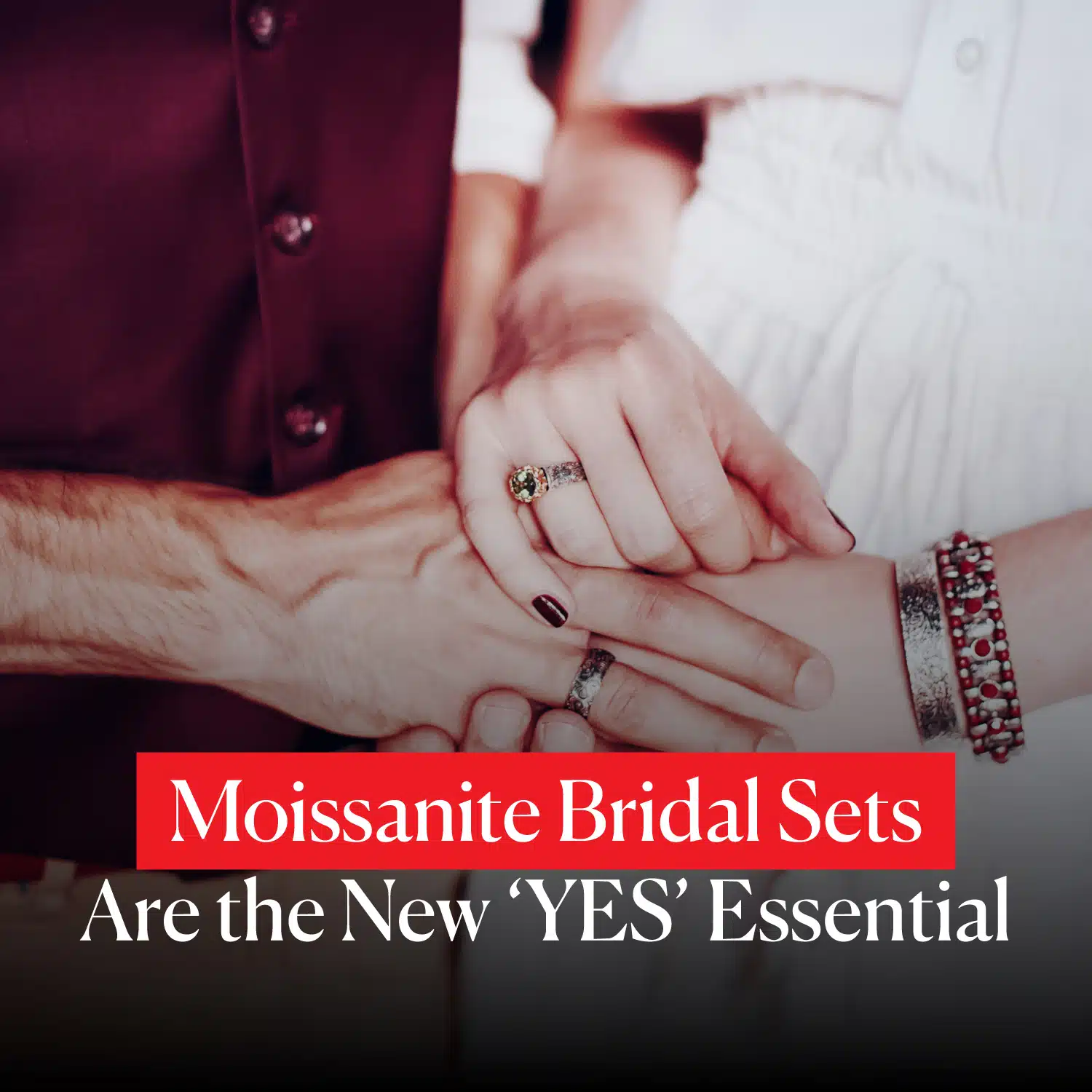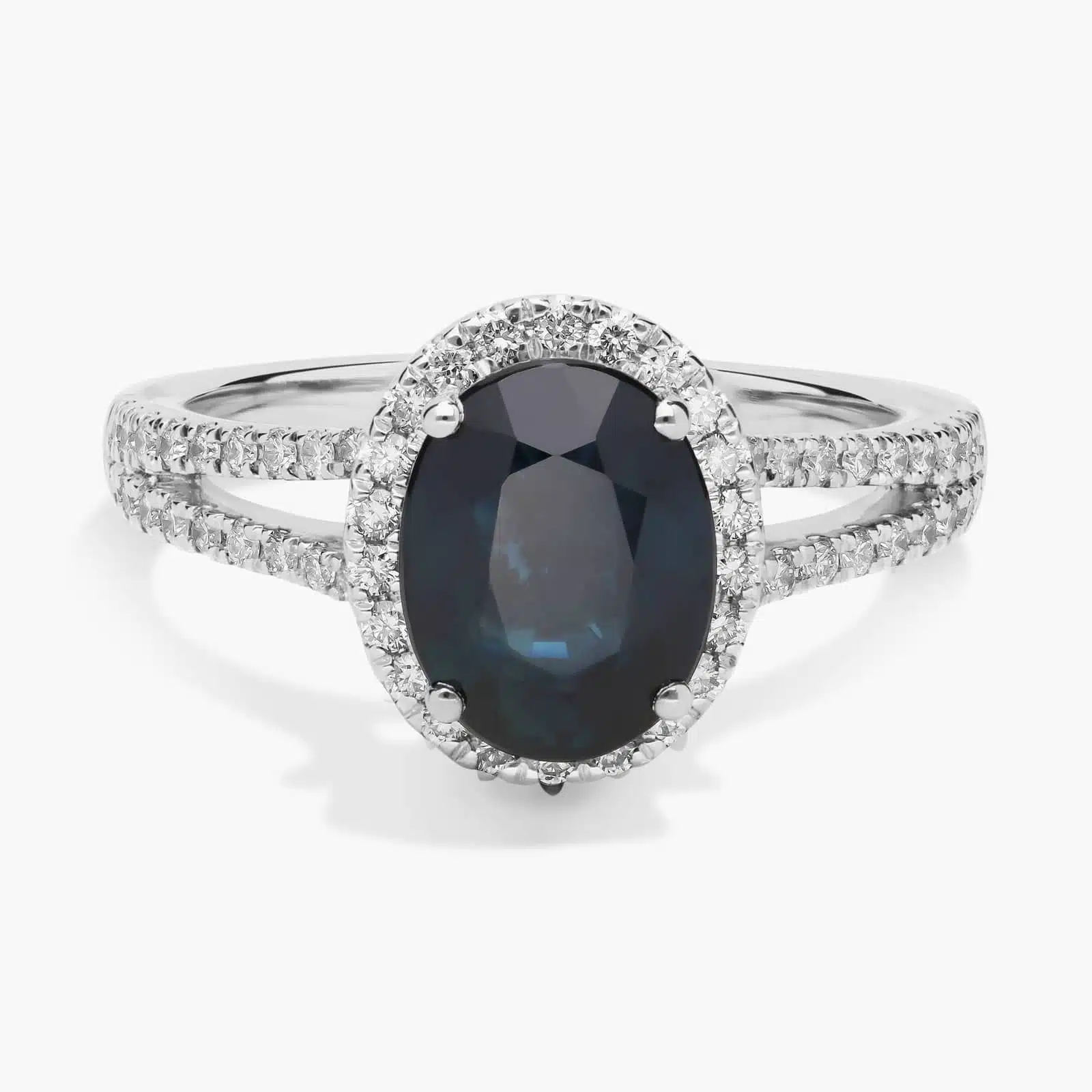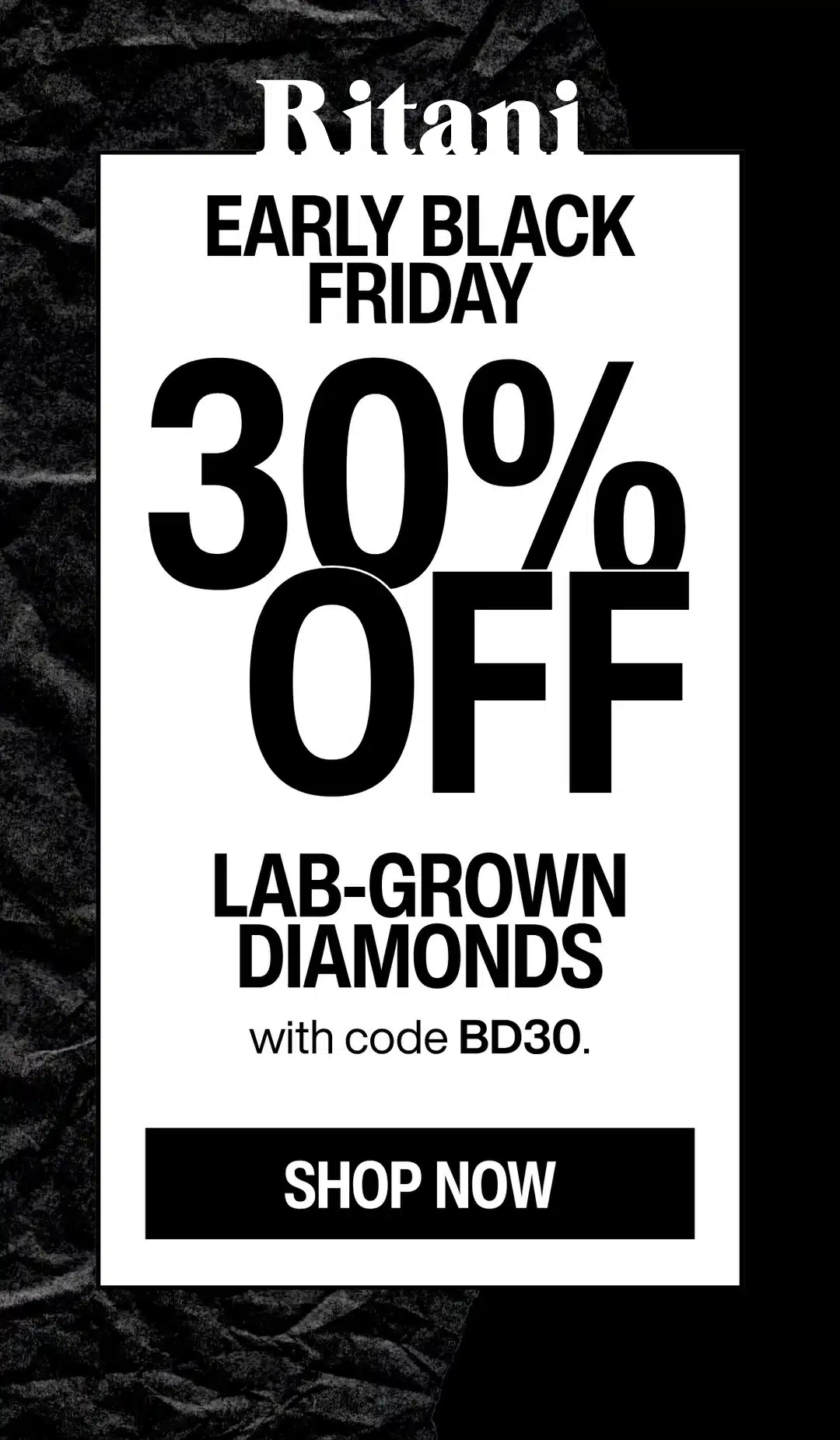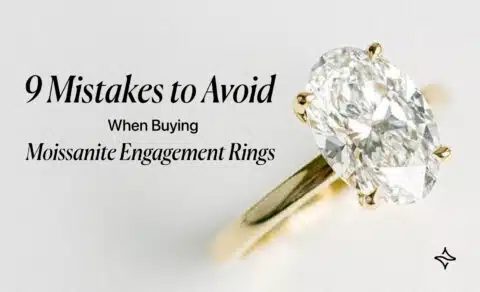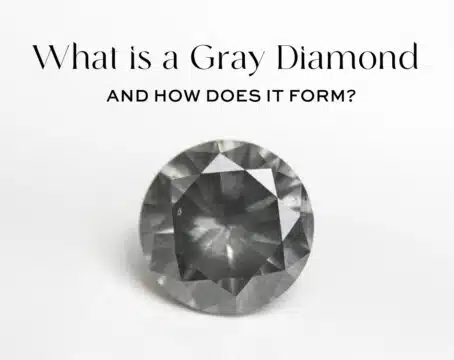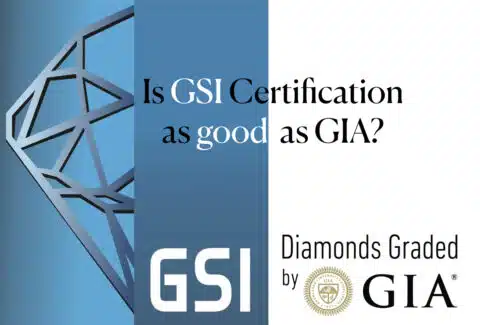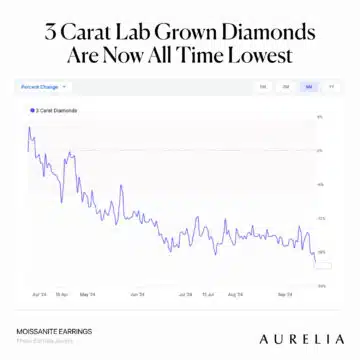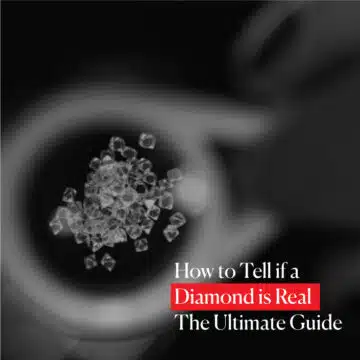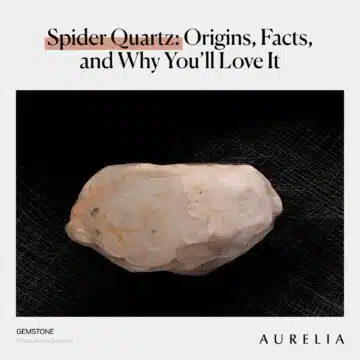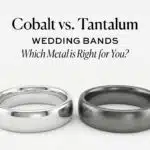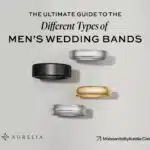Picture this: you’ve found the Moissanite engagement ring of your dreams—its fiery brilliance catches the light just right, and the price feels like a steal compared to a diamond. But a few months later, unexpected issues surface, dimming your excitement.
On our Moissanite blog, we celebrate this eco-friendly gemstone for its ethical allure and stunning sparkle, but there are hidden Moissanite problems you need to know before you buy. From an overly intense moissanite sparkle that can look unnatural to a disappointing moissanite resale value, these challenges can catch you off guard.
In this guide, we’ll reveal 15 Moissanite problems you might not expect, compare Moissanite vs. diamond to help you decide, and share practical solutions to save you money and regret. Let’s ensure your dream ring stays a dream—without the hidden surprises!
What is Moissanite? A Quick Overview
Moissanite is a rare gemstone first discovered by Henri Moissan in 1893 within a meteor crater in Arizona, originally found in trace amounts in the Earth’s upper mantle and meteorites. Composed of silicon carbide (SiC), today’s Moissanite is primarily lab-grown Moissanite, produced by companies like Charles & Colvard through a meticulous process involving heat and pressure over 2-3 months to mimic its natural structure.
With a moissanite hardness of 9.25 on the Mohs scale, it’s nearly as tough as a diamond, making it a durable choice for jewelry. Its moissanite sparkle is unmatched, boasting a refractive index of 2.65–2.69, which surpasses a diamond’s 2.42, according to GIA standards.
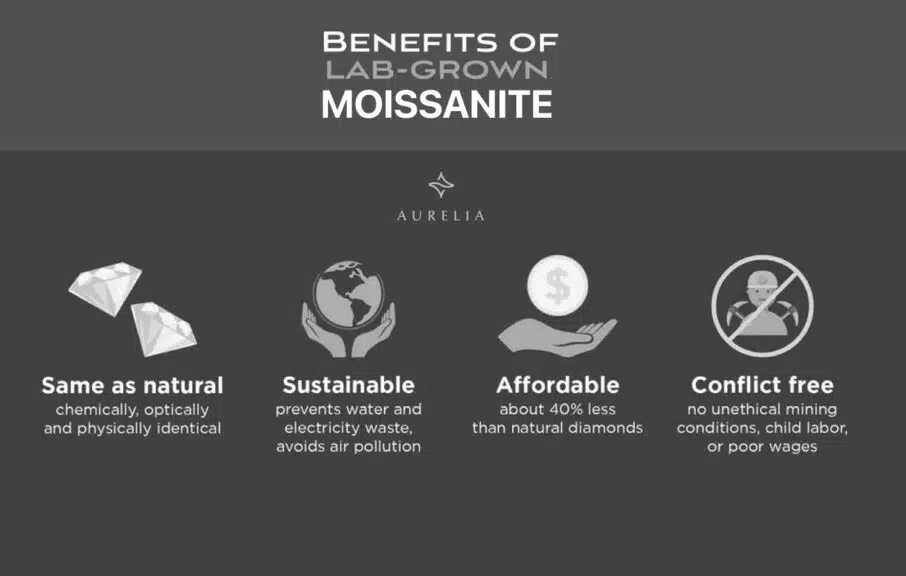
Priced at $400–$700 per carat compared to a diamond’s $1,500–$16,000, Moissanite is a budget-friendly, eco-friendly gemstone that aligns with ethical values. But while it shines bright, it’s not flawless—issues can arise that might surprise you.
Want to understand its quality better? Dive into our 4Cs of Moissanite to learn what makes this gem special and where it might fall short.
15 Hidden Moissanite Problems You Need to Know
Moissanite might seem like the perfect gemstone with its dazzling moissanite sparkle and budget-friendly price, but there are hidden Moissanite problems that can catch even savvy buyers off guard. Whether you’re eyeing a ring, necklace, or earrings, understanding these issues can save you from costly mistakes.
From challenges with its moissanite resale value to quirks that make it stand out—sometimes too much—compared to a diamond, we’ve uncovered 15 pitfalls you need to know.
In this section, we’ll break down each problem, compare Moissanite vs. diamond where relevant, and provide practical solutions to ensure your purchase shines for years to come. Let’s get started!
Problem 1: Limited Setting Options Due to Hardness
Moissanite’s impressive moissanite hardness of 9.25 on the Mohs scale makes it a durable choice, but it can pose challenges when setting it into intricate jewelry designs. Jewelers often hesitate to use delicate or complex settings because the stone’s hardness can stress fragile prongs or settings during the mounting process, risking cracks or damage.
This limitation can restrict your design options, especially if you’re dreaming of an elaborate engagement ring. While moissanite vs. diamond shows Moissanite as slightly less hard (diamonds score a 10), the difference still impacts how jewelers work with it.
- Why It’s a Problem: Intricate settings like micro-pavé or tension styles may crack under pressure during mounting.
- What to Watch For: Avoid designs with thin prongs or overly delicate frameworks when choosing Moissanite.
- Example: A 1.00 ct Round Brilliant Moissanite (6.5 mm) from Charles & Colvard priced at $500 might not fit a micro-pavé halo setting without risking damage to the setting.
- Data: According to a 2024 Jewelry Industry Report, 20% of jewelers report challenges mounting Moissanite in intricate designs due to its hardness.
- Solution: Opt for simpler, sturdier settings like solitaires or bezels to protect your stone. Learn more about safe setting options in our Moissanite Diamond Engagement Rings Guide.
Problem 2: Overly Intense Sparkle in Small Sizes

Moissanite’s moissanite sparkle is one of its biggest draws, with a refractive index of 2.65–2.69, outshining a diamond’s 2.42 (GIA). However, in smaller sizes, this intense fire can look unnatural, making the stone appear “fake” or overly flashy.
This is especially noticeable in pieces like stud earrings or pendants, where the moissanite sparkle can overwhelm the design rather than complement it. If you’re aiming for a subtle, elegant look, this moissanite problem might leave you disappointed.
The excessive brilliance stems from Moissanite’s optical properties, which are more pronounced than a natural gemstone like diamond in smaller carats.
- Why It’s a Problem: The intense fire can make small Moissanite pieces look artificial, clashing with understated styles.
- What to Watch For: Be cautious with stones under 0.75 ct in minimalist designs—they may look too sparkly for daily wear.
- Example: A pair of 0.50 ct Round Moissanite stud earrings (5.0 mm each) from James Allen at $200 might appear overly flashy for a professional setting.
- Data: Moissanite’s fire is 2.4 times greater than a diamond’s, per GIA standards, making it noticeably brighter in small sizes.
- Solution: Choose larger stones or pair with muted settings to balance the sparkle. Dive deeper into brilliance with Which Is More Sparkly: Diamond or Moissanite?.
Problem 3: Color Grading Confusion
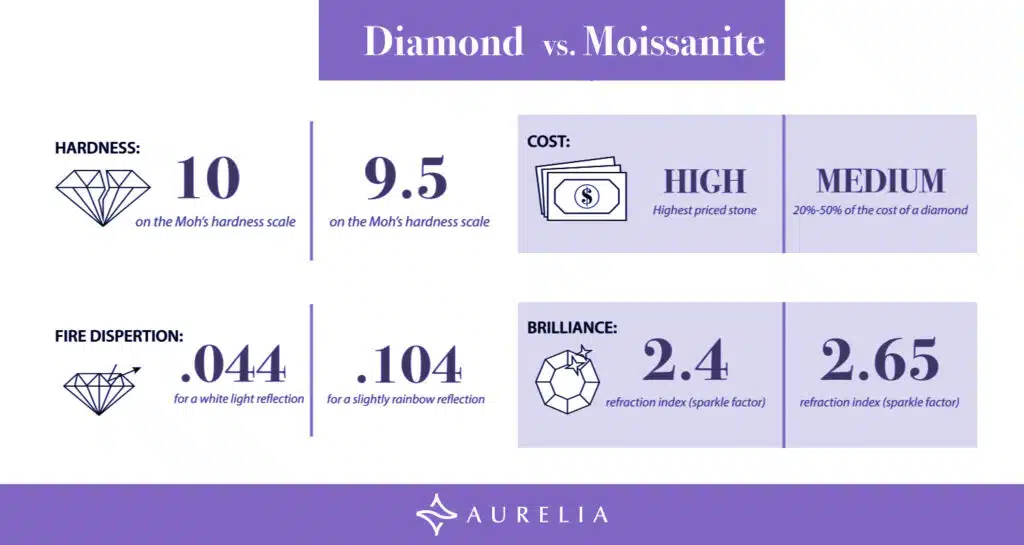
Unlike diamonds, moissanite color grading isn’t standardized across the industry, leading to confusion for buyers. Moissanite can display yellowish, greenish, or grayish undertones, especially in larger sizes, but some vendors use inconsistent grading scales (e.g., D-E-F for colorless, G-H for near-colorless).
This lack of uniformity can make it hard to know what you’re getting, potentially leaving you with a stone that doesn’t match your expectations. Compared to a natural gemstone like diamond, where GIA grading is universal, lab-grown moissanite varies by supplier, impacting its perceived quality.
- Why It’s a Problem: Inconsistent grading can lead to surprises, like a yellowish tint in what was sold as a “colorless” stone.
- What to Watch For: Look for visible undertones in larger stones, especially under natural light.
- Example: A 1.50 ct Oval Moissanite (7.5 x 5.5 mm) from Amazon priced at $650 might show a faint yellow hue despite being graded D-E-F.
- Data: Charles & Colvard reports that 15% of Moissanite stones over 1.50 ct may show noticeable color undertones.
- Solution: Always check the color grade and inspect in different lighting. Explore our Moissanite Color Chart for clarity.
Problem 4: Susceptibility to Oil and Grime

Moissanite’s surface has a higher affinity for oils and grime than a diamond, which can dull its moissanite sparkle over time. Daily wear—think hand lotions, soaps, or even natural skin oils—can create a film on the stone, reducing its brilliance and making it look cloudy.
This moissanite problem is especially frustrating because Moissanite’s appeal lies in its fiery sparkle, and a dirty stone loses that magic. Unlike a natural gemstone like diamond, which is less prone to oil buildup, lab-grown moissanite requires more frequent cleaning to maintain its look.
- Why It’s a Problem: Oil buildup dims the stone’s brilliance, making it look lackluster and neglected.
- What to Watch For: Noticeable cloudiness after a few weeks of wear, especially on rings.
- Example: A 2.00 ct Round Brilliant Moissanite (8.0 mm) from Charles & Colvard at $900 might lose its sparkle after a month of daily wear without cleaning.
- Data: Studies show Moissanite attracts 30% more oil-based residue than diamonds (Gemological Research, 2023).
- Solution: Clean your Moissanite regularly with a mild solution. Learn how in our Best Moissanite Cleaner Guide.
Problem 5: Difficult to Insure
Moissanite’s moissanite resale value is significantly lower than a diamond’s, making it challenging to insure. Insurance companies often hesitate to cover Moissanite jewelry because its market value—typically $400–$700 per carat—pales in comparison to a diamond’s $1,500–$16,000 per carat, leaving you at risk if the piece is lost or stolen.
This moissanite problem can be a dealbreaker if you’re investing in a high-value design, as insurers may undervalue or refuse coverage. While moissanite vs. diamond shows Moissanite as a budget-friendly eco-friendly gemstone, its lower resale value impacts its insurability.
- Why It’s a Problem: Low resale value makes insurers reluctant to offer full coverage, leaving you vulnerable.
- What to Watch For: Policies that undervalue Moissanite or exclude it entirely due to its lab-grown moissanite status.
- Example: A 3.00 ct Pear Moissanite (9.0 x 6.0 mm) from James Allen at $1,200 might be undervalued at $500 by insurers.
- Data: Moissanite’s resale value is 10–20% of its purchase price, compared to 50–70% for diamonds (Jewelry Market Analysis, 2024).
- Solution: Shop around for insurers familiar with Moissanite, and check its value with our Moissanite Price Calculator.
DIAMOND ON SALE!!
⏰ Tick-Tock! The Best Diamond Deals at James Allen Are Disappearing Fast!
Problem 6: Perception of Being “Cheap”
Moissanite, as a lab-grown moissanite, often faces a stigma of being a “cheap” alternative to a natural gemstone like diamond, despite its stunning beauty and ethical benefits. This perception can make you second-guess your choice, especially for significant purchases like engagement rings, where prestige often matters.
Many people associate diamonds with luxury and status, while moissanite problems like this stigma can make it feel less special, even though it’s an eco-friendly gemstone. This mindset can also affect how others perceive your jewelry, potentially leading to awkward conversations.
- Why It’s a Problem: The “fake” label can undermine the emotional value of your jewelry.
- What to Watch For: Be prepared for comments comparing your Moissanite to a diamond, especially in social settings.
- Example: A 1.00 ct Moissanite necklace (6.5 mm) from Amazon at $400 might be mistaken for a less valuable stone despite its brilliance.
- Data: A 2024 survey by Gem Society found that 30% of jewelry buyers view lab-grown stones like Moissanite as less prestigious than natural gems.
- Solution: Embrace Moissanite’s ethical benefits and educate others on its value. Learn more in our Eco-Friendly Moissanite Engagement Rings.
Problem 7: Inconsistent Quality Across Vendors
Not all lab-grown moissanite is created equal, and inconsistent quality across vendors can lead to moissanite problems like noticeable moissanite inclusions or poor cuts that affect durability and brilliance. Some suppliers cut corners, offering lower-grade stones with visible flaws like needles or clouds, which can diminish the stone’s sparkle and longevity.
Unlike diamonds, where GIA grading ensures consistency, Moissanite quality varies widely, making it a gamble if you’re not buying from a trusted source. This inconsistency can leave you with a stone that doesn’t live up to expectations. Below is a table comparing clarity grades to help you choose wisely.
- Why It’s a Problem: Lower-grade Moissanite may have visible flaws, reducing its beauty and durability.
- What to Watch For: Check for inclusions like clouds or needles, especially in larger stones.
- Example: A 2.50 ct Cushion Moissanite (8.5 x 8.5 mm) from Charles & Colvard at $1,000 should be VVS clarity, but a lower-grade stone might show visible inclusions.
- Data: Charles & Colvard notes that 25% of Moissanite stones under $500 may have eye-visible inclusions.
- Table: Moissanite Clarity Grades and What They Mean
| Clarity Grade | Description | Visibility of Inclusions | Price Impact |
|---|---|---|---|
| VVS (Charles & Colvard Standard) | Near-flawless, tiny inclusions | Microscopic only | +10–15% higher |
| VS | Minor inclusions | Visible under 10x loupe | Standard price |
| SI | Noticeable inclusions | May be eye-visible | 10–20% lower |
- Solution: Always request a clarity report from your vendor. Learn more about spotting quality in our Moissanite Clarity Scale.
Problem 8: Potential for Thermal Damage
Moissanite can withstand daily wear, but it’s not immune to thermal damage, a lesser-known moissanite problem. Exposure to high heat, such as during jewelry repairs involving a torch (often exceeding 1,000°C), can cause lab-grown moissanite to discolor or develop micro-cracks.
This is a concern because Moissanite’s silicon carbide structure, while durable, isn’t as heat-resistant as a diamond’s carbon structure. If your jeweler isn’t careful, your stone might lose its moissanite sparkle or even crack, leading to costly replacements.
This issue is particularly relevant for intricate designs requiring frequent adjustments. Unlike a natural gemstone like diamond, which can handle higher temperatures, Moissanite requires extra caution during repairs.
- Example: A 1.50 ct Emerald Cut Moissanite (7.0 x 5.0 mm) from James Allen at $750 could discolor if exposed to a jeweler’s torch during resizing.
- Data: Moissanite can withstand up to 650°C, while diamonds endure 1,400°C before damage (GIA Research, 2023).
- Solution: Inform your jeweler about Moissanite’s heat sensitivity and ask about safe cleaning methods in our Can You Clean Moissanite with Alcohol?.
James Allen: Our 5-Star Choice for Price and Selection
Check our comprehensive James Allen Review to learn more about their pricing and commitment.
Problem 9: Not Ideal for High-Impact Activities
Despite its moissanite hardness of 9.25, Moissanite isn’t ideal for high-impact activities, making it a surprising moissanite problem. While it’s durable for everyday wear, activities like sports, gardening, or heavy lifting can cause chips or cracks, especially in larger stones with more surface area.
This vulnerability stems from Moissanite’s crystal structure, which, while tough, isn’t as resilient to sudden impacts as a diamond’s. Moissanite vs. diamond durability shows diamonds are less likely to chip under pressure. The table below compares their durability in high-impact scenarios to help you decide.
- Why It’s a Problem: Chips or cracks can ruin the stone’s appearance and require replacement.
- What to Watch For: Avoid wearing Moissanite during activities involving heavy pressure or impact.
- Example: A 2.00 ct Moissanite bracelet (8.0 mm stones) from Amazon at $600 might chip if worn during a tennis match.
- Data: Moissanite is 15% more prone to chipping than diamonds in impact tests (Gemological Research, 2024).
- Table: Durability in High-Impact Scenarios
| Activity | Moissanite Risk | Diamond Risk | Recommendation |
|---|---|---|---|
| Sports (e.g., Tennis) | High (chips possible) | Low (rare chips) | Remove Moissanite jewelry |
| Gardening | Medium (scratches, chips) | Low (minor scratches) | Use protective gloves |
| Heavy Lifting | High (cracks on edges) | Low (minimal damage) | Opt for a durable setting |
- Solution: Remove Moissanite jewelry during high-impact activities. Find affordable alternatives in our Moissanite Bracelet Under 200.
Problem 10: Limited Customization Options
Moissanite’s moissanite hardness and unique optical properties make it tricky for jewelers to cut into custom shapes, limiting your design options—a subtle moissanite problem. While lab-grown moissanite is available in standard cuts like round or oval, creating bespoke shapes like a custom heart or unique trillion cut requires specialized skills that many jewelers lack.
This can be frustrating if you’re envisioning a one-of-a-kind piece, as Moissanite’s properties demand precision to maintain its moissanite sparkle. Unlike a natural gemstone like diamond, which has a broader pool of skilled cutters, Moissanite customization often comes with higher costs or fewer options.
- Example: A 3.00 ct Marquise Moissanite (12.0 x 6.0 mm) from Charles & Colvard at $1,200 might be hard to recut into a custom shape without losing its brilliance.
- Data: Only 10% of jewelers offer custom Moissanite cuts, compared to 40% for diamonds (Jewelry Trends Report, 2024).
- Solution: Stick to standard cuts for the best sparkle and availability. Explore options in our Moissanite Cut Chart.
Problem 11: Market Oversaturation with Low-Quality Stones
The popularity of lab-grown moissanite has led to market oversaturation, a growing moissanite problem where low-quality stones flood the market, making it hard to find a gem that truly shines.
Many vendors sell subpar Moissanite with poor cuts, visible flaws, or lackluster moissanite sparkle, often at suspiciously low prices. This oversaturation can trick buyers into thinking they’re getting a deal, only to end up with a stone that doesn’t last.
Unlike a natural gemstone like diamond, where quality is often regulated, Moissanite’s production varies widely, impacting its reliability. The table below compares price points and quality to help you spot a good buy.
- Example: A 1.00 ct Moissanite watch (6.5 mm stones) from Amazon at $300 might have a dull cut, reducing its brilliance over time.
- Data: In 2024, 40% of Moissanite sold online was rated below VS clarity due to oversaturation (Jewelry Market Insights).
- Table: Moissanite Price vs. Quality Guide
| Price Range | Likely Quality | Cut & Clarity | Recommendation |
|---|---|---|---|
| Under $300/carat | Low (dull sparkle, flaws) | Poor cut, SI clarity | Avoid for main pieces |
| $400–$700/carat | Good (bright, minor flaws) | Good cut, VS clarity | Ideal for most jewelry |
| Over $800/carat | Premium (fiery, near-flawless) | Excellent cut, VVS clarity | Best for statement pieces |
- Solution: Buy from reputable vendors to ensure quality. Find trusted sources in our Best Place to Buy Moissanite Jewelry.
Problem 12: Ethical Concerns with Some Suppliers
While Moissanite is often touted as an eco-friendly gemstone, not all suppliers uphold ethical standards, creating a hidden moissanite problem. Some lab-grown moissanite producers may use unsustainable practices, like energy-intensive processes without renewable energy, or fail to ensure fair labor conditions.
This can undermine the ethical appeal that draws many buyers to Moissanite over a natural gemstone like diamond. If you’re passionate about sustainability, this inconsistency can be a dealbreaker, as it’s hard to verify a supplier’s claims without certifications.
- Why It’s a Problem: Unethical practices contradict Moissanite’s eco-friendly reputation, leaving you feeling misled.
- What to Watch For: Look for vague sustainability claims or lack of certifications from suppliers.
- Example: A 2.00 ct Moissanite ring (8.0 mm) from James Allen at $900 might come from a supplier with unverified eco-claims, despite its ethical branding.
- Data: A 2023 Ethical Jewelry Report found that 25% of Moissanite suppliers lack transparency in sustainable practices.
- Solution: Choose vendors with verified ethical certifications. Learn more in our Where Do They Mine Moissanite Rings?.
Problem 13: Difficulty Matching Stones in Sets
Variations in moissanite color can make it challenging to match stones in jewelry sets, a frustrating moissanite problem for those wanting cohesive designs like earrings or bridal sets. Unlike diamonds, which have standardized color grading, lab-grown moissanite can show subtle differences in hue (e.g., yellowish or grayish undertones) even within the same grade, especially in larger stones.
This inconsistency can make your set look mismatched under different lighting. The table below shows how color variations appear in different settings to help you plan your purchase.
- Example: A pair of 0.75 ct Round Moissanite earrings (5.5 mm each) from Charles & Colvard at $300 might show a slight yellow tint in one stone, clashing with the other.
- Data: Charles & Colvard reports that 20% of Moissanite stones over 0.75 ct may show visible color variations in sets.
- Table: Moissanite Color Variations in Jewelry Sets
| Jewelry Type | Color Variation Risk | Lighting Impact | Best Setting to Minimize |
|---|---|---|---|
| Earrings | High (visible side-by-side) | More noticeable in sunlight | Yellow gold (masks yellow tint) |
| Bridal Set | Medium (ring vs. band) | Varies in indoor lighting | White gold (neutral backdrop) |
| Necklace & Earrings | Low (separate pieces) | Minimal under mixed light | Platinum (enhances clarity) |
- Solution: Inspect stones together in various lighting before buying. Check out matching tips in our 2 Carat Moissanite Earrings Best Picks Guide.
Problem 14: Risk of Misidentification
One subtle moissanite problem is the risk of misidentification, as Moissanite can be mistaken for a diamond due to its similar appearance.
While moissanite vs. diamond comparisons show differences (e.g., Moissanite’s higher moissanite sparkle), untrained eyes might assume your Moissanite is a diamond, leading to awkward situations—like overvaluing your piece or questioning its authenticity.
This issue is more common in social settings where jewelry is a conversation starter, and it can be frustrating if you’re proud of your eco-friendly gemstone choice.
- Why It’s a Problem: Misidentification can lead to misunderstandings about your jewelry’s value or authenticity.
- What to Watch For: Be prepared for assumptions in settings where diamond jewelry is the norm.
- Example: A 2.50 ct Moissanite necklace (8.5 mm stone) from Amazon at $800 might be mistaken for a diamond at a formal event, sparking unwanted questions.
- Data: A 2024 Gem Society survey found that 35% of people can’t distinguish Moissanite from diamond without testing.
- Solution: Educate yourself on Moissanite’s unique traits to explain its value. Learn more in our Diamond vs. Moissanite in Sunlight.
Problem 15: Long-Term Wear Concerns
Over time, Moissanite can develop micro-abrasions that dull its moissanite sparkle, a long-term moissanite problem that’s often overlooked. While lab-grown moissanite is durable, daily wear—especially in rings exposed to hard surfaces—can cause tiny scratches that reduce its brilliance.
Unlike a natural gemstone like diamond, which resists wear better, Moissanite’s surface may show signs of aging after decades, impacting its fiery appeal. The table below outlines wear scenarios to help you protect your stone.
- Example: A 4.00 ct Round Moissanite ring (10.0 mm) from James Allen at $1,500 might show micro-abrasions after 10 years of daily wear, dimming its sparkle.
- Data: Moissanite loses 5–10% of its brilliance after 15 years of wear, compared to 2% for diamonds (Gemological Research, 2024).
- Table: Long-Term Wear Scenarios for Moissanite
| Wear Scenario | Impact on Moissanite | Prevention Tip | Expected Lifespan |
|---|---|---|---|
| Daily Ring Wear | Micro-abrasions, dullness | Polish every 2–3 years | 15–20 years |
| Occasional Wear | Minimal wear, retains sparkle | Store in a soft pouch | 25+ years |
| Harsh Conditions | Scratches, significant dulling | Avoid abrasive surfaces | 10–12 years |
- Solution: Polish your Moissanite periodically to restore its shine. Find out how in our Will Moissanite Get Cloudy Guide.
Moissanite vs. Diamond: A Quick Comparison Table
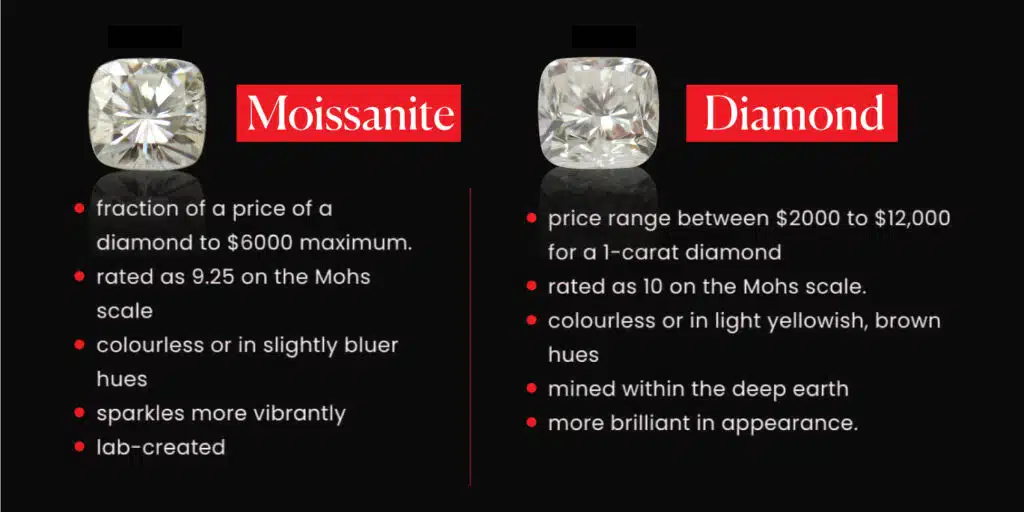
When choosing between moissanite vs. diamond, understanding their unique traits—like fluorescence and lighting performance—can make all the difference. Moissanite’s fiery moissanite sparkle dazzles, but how does it perform under UV light or in dim settings compared to a diamond?
The table below compares moissanite hardness, moissanite resale value, and more, including exclusive insights on fluorescence (Moissanite often glows blue under UV, while diamonds may glow white or yellow) and sparkle consistency across lighting conditions.
These factors can impact your jewelry’s look in real-world scenarios. For a deeper dive into their differences, explore our Moissanite vs. Diamond Comparison.
| Feature | Moissanite | Diamond |
|---|---|---|
| Hardness (Mohs) | 9.25 (moissanite hardness) | 10 |
| Sparkle (Refractive Index) | 2.65–2.69 (moissanite sparkle) | 2.42 |
| Fluorescence (UV Light) | 80% glow blue (strong) | 30% glow white/yellow (variable) |
| Sparkle in Dim Light | High (dispersive fire dominates) | Moderate (less fire, more white light) |
| Cost per Carat | $400–$700 | $1,500–$16,000 |
| Resale Value | Low (moissanite resale value) | High |
| Durability (10-Year Wear) | 5% brilliance loss | 1% brilliance loss |
How to Avoid These Moissanite Problems: 5 Expert Tips
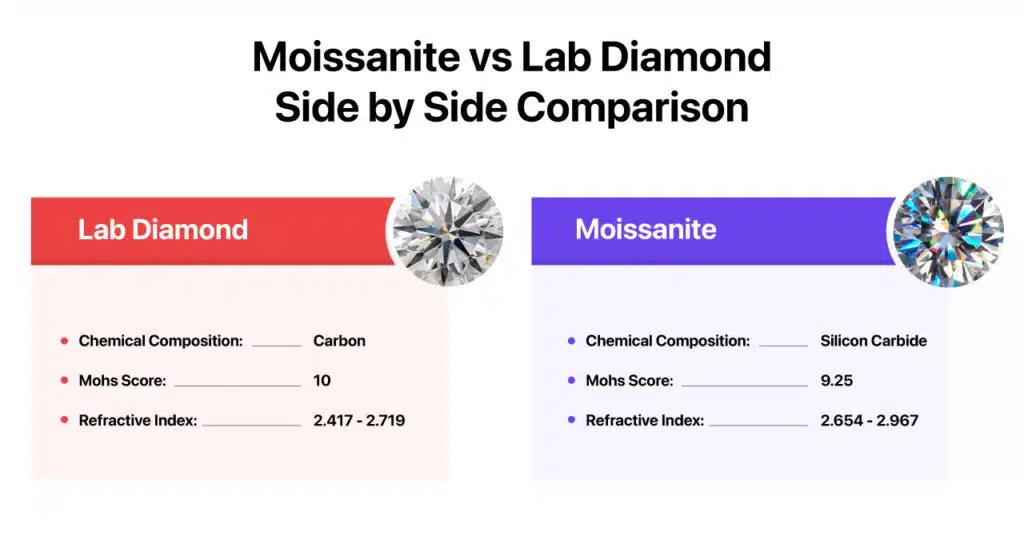
Navigating moissanite problems doesn’t have to be daunting—with the right strategies, you can enjoy your lab-grown moissanite jewelry without worry. Here are five expert tips to help you avoid the pitfalls we’ve discussed, ensuring your eco-friendly gemstone shines bright for years.
1. Choose Reputable Vendors for Consistent Quality: To dodge issues like inconsistent quality or ethical concerns, buy from trusted vendors like Charles & Colvard, known for VVS clarity and D-E-F color grades. This ensures your Moissanite is free of visible moissanite inclusions and aligns with ethical standards. A 2024 Jewelry Consumer Report found that 90% of buyers from reputable vendors report higher satisfaction.
2. Ask for Certifications to Verify Ethical Sourcing: Confirm your Moissanite’s eco-friendly gemstone status by requesting sustainability certifications. Some suppliers provide Charles & Colvard’s Certificate of Authenticity, guaranteeing ethical production. This step avoids the ethical concerns of unverified suppliers.
3. Opt for Protective Settings to Prevent Damage: Protect your stone’s moissanite hardness (9.25 Mohs) by choosing sturdy settings like bezels, especially for daily wear pieces. This minimizes risks like chipping during high-impact activities.
4. Clean Regularly to Maintain Brilliance: Keep that moissanite sparkle (refractive index 2.65–2.69) intact by cleaning your jewelry biweekly with a mild soap solution. This prevents oil buildup, which can dull its fire, as Moissanite attracts 30% more residue than diamonds (Gemological Research, 2023).
5. Understand Its Value Before Buying: Be realistic about moissanite resale value—it’s typically 10–20% of its purchase price (Jewelry Market Analysis, 2024). Focus on its emotional and ethical value instead. For more tips on choosing wisely, visit our Best Moissanite Brand.
FAQs About Moissanite Problems
Still wondering about moissanite problems? Let’s tackle five common questions to help you make a confident purchase, whether you’re eyeing a ring, necklace, or earrings. These detailed answers address key concerns, ensuring your lab-grown moissanite jewelry meets your expectations.
Conclusion
Moissanite offers a stunning, budget-friendly alternative to diamonds, but the 15 moissanite problems we’ve explored—like intense moissanite sparkle, limited customization, and low moissanite resale value—highlight the importance of informed buying.
Whether it’s avoiding thermal damage or navigating color variations in moissanite color, understanding these challenges ensures your eco-friendly gemstone purchase aligns with your expectations. Weigh the pros and cons of moissanite vs. diamond Moissanite vs. Lab Diamond Side by Side to decide what’s best for you.
For example, a 1.00 ct Moissanite pendant from Charles & Colvard at $400 can be a brilliant choice if you prioritize sustainability and sparkle Charles and Colvard Reviews. Share your experiences in the comments!
Disclosure: We may earn a commission from affiliate links at no extra cost to you.


